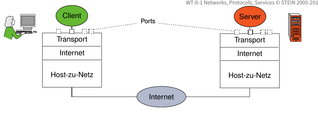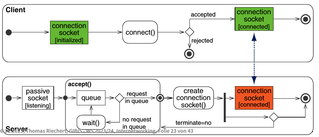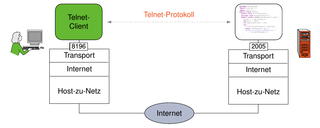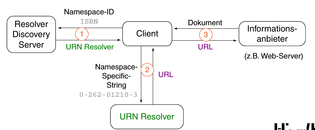Edited, memorised or added to reading queue
on 14-Feb-2024 (Wed)
Do you want BuboFlash to help you learning these things? Click here to log in or create user.
| status | not read | reprioritisations | ||
|---|---|---|---|---|
| last reprioritisation on | suggested re-reading day | |||
| started reading on | finished reading on |
| status | not read | reprioritisations | ||
|---|---|---|---|---|
| last reprioritisation on | suggested re-reading day | |||
| started reading on | finished reading on |
| status | not read | reprioritisations | ||
|---|---|---|---|---|
| last reprioritisation on | suggested re-reading day | |||
| started reading on | finished reading on |
| status | not read | reprioritisations | ||
|---|---|---|---|---|
| last reprioritisation on | suggested re-reading day | |||
| started reading on | finished reading on |
| status | not read | reprioritisations | ||
|---|---|---|---|---|
| last reprioritisation on | suggested re-reading day | |||
| started reading on | finished reading on |
| status | not read | reprioritisations | ||
|---|---|---|---|---|
| last reprioritisation on | suggested re-reading day | |||
| started reading on | finished reading on |
| status | not read | reprioritisations | ||
|---|---|---|---|---|
| last reprioritisation on | suggested re-reading day | |||
| started reading on | finished reading on |
| status | not read | reprioritisations | ||
|---|---|---|---|---|
| last reprioritisation on | suggested re-reading day | |||
| started reading on | finished reading on |
| status | not read | reprioritisations | ||
|---|---|---|---|---|
| last reprioritisation on | suggested re-reading day | |||
| started reading on | finished reading on |
| status | not read | reprioritisations | ||
|---|---|---|---|---|
| last reprioritisation on | suggested re-reading day | |||
| started reading on | finished reading on |
| status | not read | reprioritisations | ||
|---|---|---|---|---|
| last reprioritisation on | suggested re-reading day | |||
| started reading on | finished reading on |
| status | not read | reprioritisations | ||
|---|---|---|---|---|
| last reprioritisation on | suggested re-reading day | |||
| started reading on | finished reading on |
| status | not read | reprioritisations | ||
|---|---|---|---|---|
| last reprioritisation on | suggested re-reading day | |||
| started reading on | finished reading on |
| status | not read | reprioritisations | ||
|---|---|---|---|---|
| last reprioritisation on | suggested re-reading day | |||
| started reading on | finished reading on |
| status | not read | reprioritisations | ||
|---|---|---|---|---|
| last reprioritisation on | suggested re-reading day | |||
| started reading on | finished reading on |
| status | not read | reprioritisations | ||
|---|---|---|---|---|
| last reprioritisation on | suggested re-reading day | |||
| started reading on | finished reading on |
| status | not read | reprioritisations | ||
|---|---|---|---|---|
| last reprioritisation on | suggested re-reading day | |||
| started reading on | finished reading on |
| status | not read | reprioritisations | ||
|---|---|---|---|---|
| last reprioritisation on | suggested re-reading day | |||
| started reading on | finished reading on |
| status | not read | reprioritisations | ||
|---|---|---|---|---|
| last reprioritisation on | suggested re-reading day | |||
| started reading on | finished reading on |
| status | not read | reprioritisations | ||
|---|---|---|---|---|
| last reprioritisation on | suggested re-reading day | |||
| started reading on | finished reading on |
| status | not read | reprioritisations | ||
|---|---|---|---|---|
| last reprioritisation on | suggested re-reading day | |||
| started reading on | finished reading on |
| status | not read | reprioritisations | ||
|---|---|---|---|---|
| last reprioritisation on | suggested re-reading day | |||
| started reading on | finished reading on |
| status | not read | reprioritisations | ||
|---|---|---|---|---|
| last reprioritisation on | suggested re-reading day | |||
| started reading on | finished reading on |
| status | not read | reprioritisations | ||
|---|---|---|---|---|
| last reprioritisation on | suggested re-reading day | |||
| started reading on | finished reading on |
| status | not read | reprioritisations | ||
|---|---|---|---|---|
| last reprioritisation on | suggested re-reading day | |||
| started reading on | finished reading on |
| status | not read | reprioritisations | ||
|---|---|---|---|---|
| last reprioritisation on | suggested re-reading day | |||
| started reading on | finished reading on |
| status | not read | reprioritisations | ||
|---|---|---|---|---|
| last reprioritisation on | suggested re-reading day | |||
| started reading on | finished reading on |
| status | not read | reprioritisations | ||
|---|---|---|---|---|
| last reprioritisation on | suggested re-reading day | |||
| started reading on | finished reading on |
| status | not read | reprioritisations | ||
|---|---|---|---|---|
| last reprioritisation on | suggested re-reading day | |||
| started reading on | finished reading on |
Passing Data Deeply with Context – React
ight Not Need an Effect Lifecycle of Reactive Effects Separating Events from Effects Removing Effect Dependencies Reusing Logic with Custom Hooks Is this page useful? Learn React Managing State <span>Passing Data Deeply with Context Usually, you will pass information from a parent component to a child component via props. But passing props can become verbose and inconvenient if you have to pass them through many co
| status | not read | reprioritisations | ||
|---|---|---|---|---|
| last reprioritisation on | suggested re-reading day | |||
| started reading on | finished reading on |
Typing Destructured Object Parameters in TypeScript — Marius Schulz
file (set aside type errors, that is). Therefore, TypeScript can't simply change the meaning of the destructuring expression { pretty: boolean }. It looks like a type annotation, but it's not. #<span>Typing Immediately Destructured Parameters Of course, TypeScript offers a way to provide an explicit type annotation. It's a little verbose, yet (if you think about it) consistent: function toJSON(value: any, { pretty }: { pretty: boolean }) { const indent = pretty ? 4 : 0; return JSON.stringify(value, null, indent); } You're not directly typing the pretty property, but the settings object it belongs to, which is the actual parameter passed to the toJSON function. If you now try to compile the above T
| status | not read | reprioritisations | ||
|---|---|---|---|---|
| last reprioritisation on | suggested re-reading day | |||
| started reading on | finished reading on |
styled-components: Basics
-react-app? How can I fix issues when using npm link or yarn link? How do I fix flickering text after server side rendering? Missing Declarations for styled-components/native? Basics Motivation <span>styled-components is the result of wondering how we could enhance CSS for styling React component systems. By focusing on a single use case we managed to optimize the experience for developers as well as the output for end users. Apart from the improved experience for developers, styled-components provides: Automatic critical CSS: styled-components keeps track of which components are rendered on a page and injec
| status | not read | reprioritisations | ||
|---|---|---|---|---|
| last reprioritisation on | suggested re-reading day | |||
| started reading on | finished reading on |
Unknown title
You Might Not Need Redux. People often choose Redux before they… | by Dan Abramov | Medium Open in app Sign up Sign in Write Sign up Sign in Top highlight You Might Not Need Redux Dan Abramov · Follow 3 min read · Sep 19, 2016 42K 101 Listen Share People often choose Redux before they need it. “What if our app doesn’t scale without it?” Later, developers frown at
| status | not read | reprioritisations | ||
|---|---|---|---|---|
| last reprioritisation on | suggested re-reading day | |||
| started reading on | finished reading on |
Unknown title
ay Core Concepts Learning Resources Ecosystem Examples Tutorials Using Redux Understanding Redux FAQ Style Guide API Reference Redux Toolkit Introduction Getting Started with Redux On this page <span>Getting Started with Redux Redux is a predictable state container for JavaScript apps. It helps you write applications that behave consistently, run in different environments (client, server, and native), and are
| status | not read | reprioritisations | ||
|---|---|---|---|---|
| last reprioritisation on | suggested re-reading day | |||
| started reading on | finished reading on |
How to Style Your React Apps with CSS Like a Pro
ets/prism/1.29.0/plugins/unescaped-markup/prism-unescaped-markup.min.css" /> Search Submit your search query Forum Donate Learn to code — free 3,000-hour curriculum January 18, 2023 / #React <span>How to Style Your React Apps with CSS Like a Pro Valentine Gatwiri React is a JavaScript library for building user interfaces. And it's gained a lot of popularity in the front-end development community. One of the benefits of using Re
| status | not read | reprioritisations | ||
|---|---|---|---|---|
| last reprioritisation on | suggested re-reading day | |||
| started reading on | finished reading on |
Using data attributes - Learn web development | MDN
article HTML syntax JavaScript access CSS access Issues See also Get 24/7 breach monitoring and automatic alerts if you’ve been affected. Try Firefox Monitor.Mozilla ads Don't want to see ads? <span>Using data attributes HTML is designed with extensibility in mind for data that should be associated with a particular element but need not have any defined meaning. data-* attributes allow us to store extra
| status | not read | reprioritisations | ||
|---|---|---|---|---|
| last reprioritisation on | suggested re-reading day | |||
| started reading on | finished reading on |
CSS preprocessor - MDN Web Docs Glossary: Definitions of Web-related terms | MDN
ware globally.Mozilla ads Don't want to see ads? In this article See also View the web from your users’ perspective. Use Mozilla VPN to test software globally.Mozilla ads Don't want to see ads? <span>CSS preprocessor A CSS preprocessor is a program that lets you generate CSS from the preprocessor's own unique syntax. There are many CSS preprocessors to choose from, however most CSS preprocessors wil
| status | not read | reprioritisations | ||
|---|---|---|---|---|
| last reprioritisation on | suggested re-reading day | |||
| started reading on | finished reading on |
Unknown title
Native CSS Mixins. My Thoughts on Native vs Sass | by Adam Johnston | Medium Open in app Sign up Sign in Write Sign up Sign in Native CSS Mixins My Thoughts on Native vs Sass Mixins Adam Johnston · Follow 3 min read · Jun 11, 2016 183 Listen Share CSS may be getting native mixins. When I heard that I was very excited, but my excitement has been a little tempered, b
| status | not read | reprioritisations | ||
|---|---|---|---|---|
| last reprioritisation on | suggested re-reading day | |||
| started reading on | finished reading on |
Unknown title
Theming Web Apps with SASS. Need to support multiple color themes… | by Dmitry Borody | Medium Open in app Sign up Sign in Write Sign up Sign in Theming Web Apps with SASS Dmitry Borody · Follow 3 min read · Feb 22, 2017 1.5K 19 Listen Share Need to support multiple color themes in your app? Here’s a simple way to do it in SASS. However there are many way
| status | not read | reprioritisations | ||
|---|---|---|---|---|
| last reprioritisation on | suggested re-reading day | |||
| started reading on | finished reading on |
SitePoint
ium Hmm... Couldn’t find any articles containing: ¯\_(ツ)_/¯ Free Tech Books AI JavaScript Computing Design & UX HTML & CSS Entrepreneur Web PHP WordPress Mobile Programming Python Blogs <span>Sass Theming: The Neverending Story Sass Kitty Giraudel May 26, 2015 Share Building grid systems and theming engines is a neverending Sass story. There are probably as many Sass-powered grid systems as JavaScript framewor
| status | not read | reprioritisations | ||
|---|---|---|---|---|
| last reprioritisation on | suggested re-reading day | |||
| started reading on | finished reading on |
Sass: Maps
hannel abs() Percentage Command Line Overview Dart Sass Ruby Sass Migrator JavaScript API Page Sections Using Maps Overview Look Up a Value Do Something for Every Pair Add to a Map Immutability <span>Maps in Sass hold pairs of keys and values, and make it easy to look up a value by its corresponding key. They’re written (<expression>: <expression>, <expression>: <expression>). The expression before the : is the key, and the expression after is the value associated with that key. The keys must be unique, but the values may be duplicated. Unlike lists, maps must be written with parentheses around them. A map with no pairs is written (). 💡 Fun fact: Astute readers may note that an empty map, (), is written the same as an empty list. That’s because it counts as both a map and a list. In fact, all maps count as lists! Eve
| status | not read | reprioritisations | ||
|---|---|---|---|---|
| last reprioritisation on | suggested re-reading day | |||
| started reading on | finished reading on |
SCSS Tutorial | Toptal®
lientsEnterpriseCommunityBlogAbout Us Apply as a Developer Hire a Developer Log In Engineering Engineering Design Finance Projects Product Toptal Insights Search Web Front-end< 5 minute read <span>Theming with Sass: An SCSS Tutorial When it comes to theming; that is, changing the look and feel of your website while maintaining the same layout, Sass’ features—like mixins or functions—can feel like taking a plane ins
| status | not read | reprioritisations | ||
|---|---|---|---|---|
| last reprioritisation on | suggested re-reading day | |||
| started reading on | finished reading on |
Sass: Sass Basics
uses indentation rather than curly braces to nest statements, and newlines instead of semicolons to separate them. All our examples are available in both syntaxes. VariablesVariables permalink <span>Think of variables as a way to store information that you want to reuse throughout your stylesheet. You can store things like colors, font stacks, or any CSS value you think you’ll want to reuse. Sass uses the $ symbol to make something a variable. Here’s an example: SCSS Sass CSS SCSS Syntax $font-stack: Helvetica, sans-serif; $primary-color: #333; body { font: 100% $font-stack; color: $primary-color; } Sass Syntax $font-stack: H
| status | not read | reprioritisations | ||
|---|---|---|---|---|
| last reprioritisation on | suggested re-reading day | |||
| started reading on | finished reading on |
Unknown title
Accessibility Custom Queries Debugging Querying Within Elements Configuration Options Frameworks User Interactions Ecosystem Core API Queries About Queries On this page About Queries Overview <span>Queries are the methods that Testing Library gives you to find elements on the page. There are several types of queries ("get", "find", "query"); the difference between them is whether the query will throw an error if no element is found or if it will return a Promise and retry. Depending on what page content you are selecting, different queries may be more or less appropriate. See the priority guide for recommendations on how to make use of semantic queries to
| status | not read | reprioritisations | ||
|---|---|---|---|---|
| last reprioritisation on | suggested re-reading day | |||
| started reading on | finished reading on |
Intl - JavaScript | MDN
es Static methods Examples Specifications Browser compatibility See also GitLab is the most comprehensive AI-powered DevSecOps Platform. Software. Faster.Mozilla ads Don't want to see ads? Intl <span>The Intl namespace object contains several constructors as well as functionality common to the internationalization constructors and other language sensitive functions. Collectively, they comprise the ECMAScript Internationalization API, which provides language sensitive string comparison, number formatting, date and time formatting, and more. Description Unlike most global objects, Intl is not a constructor. You cannot use it with the new operator or invoke the Intl object as a function. All properties and methods of Intl ar
| status | not read | reprioritisations | ||
|---|---|---|---|---|
| last reprioritisation on | suggested re-reading day | |||
| started reading on | finished reading on |
Straightforward React UI Testing | Toptal®
3%WhyClientsEnterpriseCommunityBlogAbout Us Apply as a Developer Hire a Developer Log In Engineering Engineering Design Finance Projects Product Toptal Insights Search Technology10 minute read <span>Straightforward React UI Testing Using React.js props your application’s front-end. In particular, testing user interactions and viewing renderings is vastly improved with React UI testing. Toptal authors are vetted ex
| status | not read | reprioritisations | ||
|---|---|---|---|---|
| last reprioritisation on | suggested re-reading day | |||
| started reading on | finished reading on |
| status | not read | reprioritisations | ||
|---|---|---|---|---|
| last reprioritisation on | suggested re-reading day | |||
| started reading on | finished reading on |
| status | not read | reprioritisations | ||
|---|---|---|---|---|
| last reprioritisation on | suggested re-reading day | |||
| started reading on | finished reading on |
| status | not read | reprioritisations | ||
|---|---|---|---|---|
| last reprioritisation on | suggested re-reading day | |||
| started reading on | finished reading on |
| status | not read | reprioritisations | ||
|---|---|---|---|---|
| last reprioritisation on | suggested re-reading day | |||
| started reading on | finished reading on |
| status | not read | reprioritisations | ||
|---|---|---|---|---|
| last reprioritisation on | suggested re-reading day | |||
| started reading on | finished reading on |
| status | not read | reprioritisations | ||
|---|---|---|---|---|
| last reprioritisation on | suggested re-reading day | |||
| started reading on | finished reading on |
html - How to reuse an embedded SVG element in the same page? - Stack Overflow
work Connect and share knowledge within a single location that is structured and easy to search. Learn more about Teams Get early access and see previews of new features. Learn more about Labs <span>How to reuse an embedded SVG element in the same page? Ask Question Asked 8 years, 2 months ago Modified 2 years, 8 months ago Viewed 14k times Report this ad This question shows research effort; it is useful and clear 17 This question does







